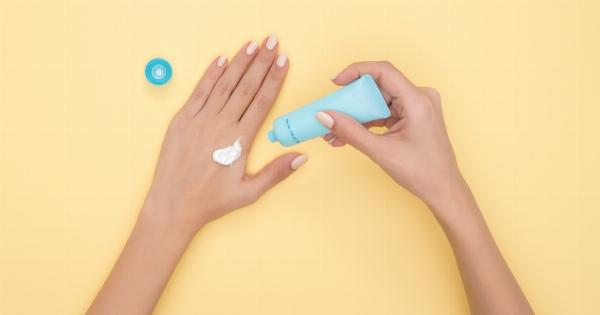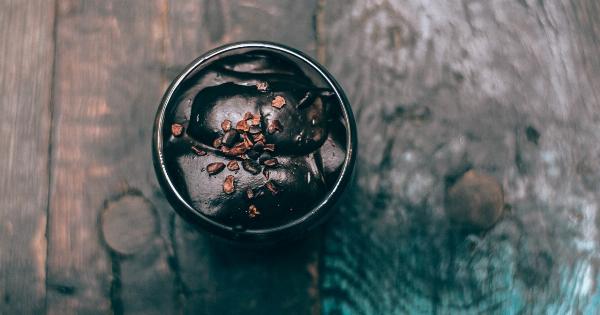Moisturizer plays a vital role in maintaining healthy skin. It helps to replenish lost moisture and create a protective barrier against external aggressors. Lack of moisture can lead to dryness, flakiness, and even premature aging.
Choosing the right moisturizer for your skin type and its specific needs is crucial in achieving a healthy and radiant complexion.
Understanding Your Skin Type
One of the first steps in selecting an appropriate moisturizer is understanding your skin type. Skin types generally fall into four categories: dry, oily, sensitive, and combination.
Dry Skin
If you have dry skin, it is essential to choose a moisturizer that offers intense hydration and prevents moisture loss. Look for moisturizers rich in emollients like shea butter, ceramides, and natural oils.
These ingredients help nourish and soothe dry skin, leaving it feeling soft and supple.
Oily Skin
For individuals with oily skin, a lightweight, oil-free moisturizer is the way to go. Look for products labeled as “non-comedogenic” or “oil-free” to prevent clogged pores and potential breakouts.
Gel or water-based moisturizers are excellent options as they provide hydration without adding extra shine or greasiness.
Sensitive Skin
Sensitive skin requires special care and attention. Opt for a moisturizer specifically formulated for sensitive skin types. Look for products that are free from fragrances, dyes, and harsh chemicals.
Additionally, moisturizers containing soothing ingredients such as aloe vera or chamomile can help calm and comfort sensitive skin.
Combination Skin
Combination skin is characterized by having both oily and dry areas. The key is to strike a balance by using a moisturizer that can hydrate and nourish without exacerbating oiliness. Consider using different moisturizers for specific areas of your face.
Apply a lightweight, oil-free moisturizer to oily zones and a richer moisturizer to dry areas.
Decoding Product Labels
Product labels can be overwhelming with their long lists of ingredients and claims. Understanding key terms and ingredients can help you choose the right moisturizer.
Types of Moisturizers
There are various types of moisturizers available on the market. Understanding their differences can help you select the most suitable one.
1. Creams
Cream moisturizers are thicker in consistency and provide deep hydration. They are ideal for drier skin types or during colder months when skin tends to be more parched.
Creams typically contain a mix of water, oil, and other beneficial ingredients like hyaluronic acid and antioxidants.
2. Lotions
Lotions have a lighter consistency and are more water-based. They are suitable for normal to slightly dry skin and can be used throughout the year. Lotions are easily absorbed and provide a moderate level of hydration.
They are often formulated with a variety of moisturizing agents and may include humectants to attract and retain moisture.
3. Gels
Gel moisturizers have a lightweight and non-greasy texture. They are excellent for oily or combination skin types as they provide hydration without adding excess oil.
Gel formulations commonly contain ingredients like aloe vera and hyaluronic acid, which soothe and hydrate the skin.
4. Serums
Serums are highly concentrated formulations designed to deliver potent active ingredients deep into the skin. While not technically moisturizers on their own, they can be used in conjunction with a moisturizer to enhance its effectiveness.
Serums are often packed with antioxidants, vitamins, and other skin-loving ingredients that target specific concerns like fine lines, uneven skin tone, or dullness.
Choosing the Right Ingredients
The ingredients within a moisturizer greatly influence its effectiveness and suitability for different skin types and concerns. Here are some key ingredients to look out for:.
1. Hyaluronic Acid
Hyaluronic acid is a powerhouse ingredient that attracts and retains moisture, providing intense hydration to the skin. It is beneficial for both dry and oily skin types as it balances hydration levels.
2. Glycerin
Glycerin is a humectant that draws moisture from the air and holds it in the skin, keeping it supple and hydrated. It is suitable for all skin types and an excellent moisturizing ingredient.
3. Shea Butter
Shea butter is a rich emollient that nourishes and softens the skin. It helps to seal in moisture and is particularly beneficial for dry, sensitive, or mature skin.
4. Ceramides
Ceramides are natural lipids found in the skin’s barrier. They help lock in moisture, strengthen the skin’s protective barrier, and improve overall hydration. Ceramides are especially beneficial for dry or irritated skin.
5. Antioxidants
Antioxidants like vitamin C, vitamin E, and green tea extract protect the skin from free radicals and environmental damage. They help to maintain a healthy complexion and support overall skin health.
Application Techniques
Proper application techniques can maximize the benefits of your moisturizer.
1. Cleanse First
Start by cleansing your skin to remove dirt, oil, and impurities. Pat your face dry with a clean towel before applying moisturizer.
2. Use the Right Amount
A little goes a long way with moisturizer. Begin with a small amount and gradually increase if needed. Applying too much can lead to a greasy or heavy feel.
3. Warm It Up
Rub the moisturizer between your palms to warm it up before applying. This helps the product spread more easily and enhances absorption.
4. Gentle Massage
Apply the moisturizer using gentle upward strokes, focusing on areas that need extra hydration. Massage the product into the skin using circular motions to promote blood circulation and aid absorption.
5. Don’t Forget the Neck and Chest
Extend your moisturizing routine to your neck and chest areas as these often show signs of aging and require hydration as well.
Conclusion
Moisturizer is a skincare essential that can work wonders for your skin when chosen correctly.
Understanding your skin type, deciphering product labels, and selecting the right ingredients are key factors in finding the perfect moisturizer for your needs. Proper application techniques further enhance the benefits of moisturizer, helping you achieve a healthy, hydrated, and radiant complexion.































